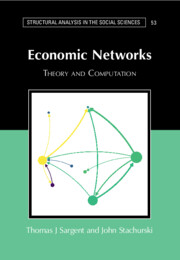Economic Networks
It has become increasingly clear that economies can fruitfully be viewed as networks, consisting of millions of nodes (households, firms, banks, etc.) connected by business, social, and legal relationships. These relationships shape many outcomes that economists often measure. Over the past few years, research on production networks has flourished, as economists try to understand supply-side dynamics, default cascades, aggregate fluctuations, and many other phenomena. Economic Networks provides a brisk introduction to network analysis that is self-contained, rigorous, and illustrated with many figures, diagrams and listings with computer code. Network methods are put to work analyzing production networks, financial networks, and other related topics (including optimal transport, another highly active research field). Visualizations using recent data bring key ideas to life.
- Provides careful, thorough exposition and demonstrates the power of mathematical modelling
- Illustrates key ideas both through mathematics and computation
- Provides new applications related to recent economic events, such as supply chain disruptions and financial crises
- Includes a substantial amount of computer code within the PDF and includes a 'code book', which uses Jupyter to supply supporting Python and Julia code
Product details
April 2024Paperback
9781009456364
266 pages
245 × 170 × 15 mm
0.475kg
Available
Table of Contents
- Preface
- Common symbols
- 1. Introduction
- 2. Production
- 3. Optimal flows
- 4. Markov chains and networks
- 5. Nonlinear interactions
- Appendices
- 6. Appendix.





